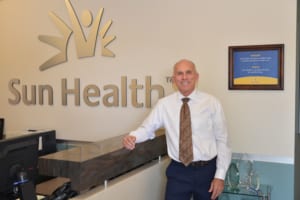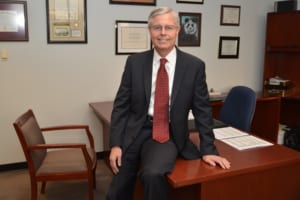Kuldip Verma’s product cannot to duplicated.
“We don’t make land any more,” said the CEO of Vermaland. “Most of our resources — food, oil, minerals, wood — come from the land. Everything comes out of land. As the population grows, there will be a lot of pressure on the land.”
When it comes to pressure, Verma is as cool as business leaders come. He has gone from being raised in a small Indian village that had no electricity for the first decade of him life, to becoming the largest landholder of 50-acre to 1,200-acre parcels in Metro Phoenix.
So how did he do it? Az Business sat down with Verma to learn his story.
Az Business: How did you get into the land business?
Kuldip Verma: In 1991, I wanted to get into land development in Hawaii, but it was a bad time to get into the market in Hawaii. At that time, Phoenix was already hit with the downturn and you could buy things here for 10 cents to the dollar and office buildings were 20 cents to the dollar. I looked at data and found that Phoenix was the fastest-growing city in the United States and had been growing since 1950. So I decided to come to Phoenix, got into one office project and then purchased land at the foot of the White Tank Mountains for $1,500 per acre. Everybody said, “No one is ever going to go there.” My wife said, “You’re just wasting your money.” I told them that my dream was to see houses there one day. Four or five years later, a developer came and offered to do a joint venture and — at the peak — we were selling the one-acre lots for almost $300,000 per acre. So that was a huge, exponential rate of return.
AB: How did you have the foresight to see the value of that land?
KV: Even though we see a lot of land when we drive around, I noticed that the private, developable land in Arizona was only 17 percent. A lot of the land belongs to Indian reservations, federal agencies, the State Land Trust. The developable land is very limited. That was the key reason I knew land would be very valuable here. When you can get people to start moving there, that’s when the price really shoots up. So you do your projections and if you can buy at a really low price and know that people will move there one day, that’s a good deal.
AB: How do you have the patience it takes to be a land investor?
KV: I try to purchase the land that is selling at a discount, whether it’s because somebody wants to sell, the bank needs to sell or some other reason. As for patience, let’s say you buy a piece of land at $5,000 an acre. You think after 10 years or 15 years the development will get there. The following year, it may not be $5,000 an acre, but it may be $7,000 or $8,000, so you still have an out. It’s not like you have to hold that investment for 10 or 15 years, but the maximum appreciation comes when the population comes to the land.
AB: What is the best deal you’ve made?
KV: Sonoran Ridge Estates is one of the best deal that already produced the results we envisioned. We also bought a property called La Rosa Ranch that was the largest master-planned community southeast of Casa Grande. It’s very close to the proposed switching yard for Union-Pacific Railroad. I consider that to be the best purchase of my lifetime because the rate of return on that land is going to be humungous.
AB: How does it feel to see your vision come to fruition?
KV: It gives me so much joy to drive around and see homes where there was once nothing. That’s the best feeling you can have.




